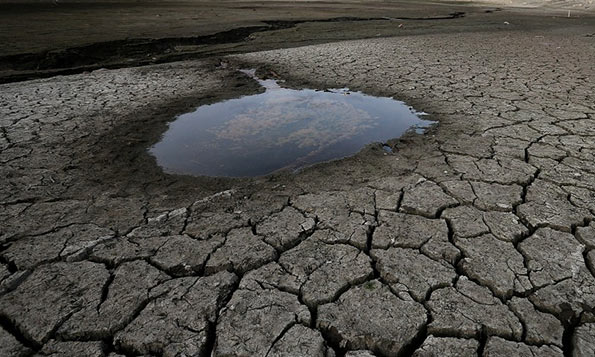As drought slashes rice harvest, 900,000 face hunger in Sri Lanka

The worst drought in five years has pushed 900,000 people in Sri Lanka into “acute food insecurity”, the World Food Programme (WFP) says.
An unpublished survey conducted by government agencies and relief organizations in February found that both food insecurity and debt were rising sharply among families hit by drought, the WFP office in Sri Lanka confirmed to the Thomson Reuters Foundation.
The country’s rice harvest could be the worst in 40 years, charity Save the Children predicted. The just-completed harvest was 63 percent below normal, it said.
The survey found that over one third of the drought-affected households had seen their income drop by half since September and 60 percent of the households surveyed were in debt.
The average amount of debt was about 180,000 Sri Lankan rupees, or $1,200, WFP said.
The survey findings are expected to be formally released later this month.
Sri Lanka’s government said over 1.2 million people have been affected by the country’s current drought, which began last November and continues despite some occasional rainfall over the last two months.
Save the Children estimates that over 600,000 of those affected – two thirds of the total – are children.
The Western and Northern Provinces have been worst hit, with over 400,000 people struggling with drought in each province.
RICE HARVEST HALVED
Government and WFP assessments suggest Sri Lanka’s 2017 rice harvest could be less than half the 3 million metric tons recorded last year.
According to WFP assessments the island needs 2.3 million metric tons of rice for annual consumption but the overall 2017 rice harvest is projected to yield just 1.44 metric tons.
The government has already taken steps to increase rice imports to stave off shortages, Disaster Management Minister Anura Priyadarshana Yapa said.
“We have a shortfall in the rice harvest. We have been taking action to prevent any shortfalls and will allow for tax-free rice imports until the harvest recovers,” he said.
Worst-affected by the drought have been farmers and those relying on agricultural work for income. The joint WFP and government survey indicated that one out of five farmers and one out of four farm laborers is now classified as food insecure in the drought region.
Preliminary data in the survey also indicated that female-headed households in drought areas were faring worse than others, with almost 20 percent reporting “poor” to “borderline” ability to access enough food as a result of the drought.
Yapa said that the government was devising a plan to help those affected and “we will begin cash assistance very soon”.
The initial plan is to provide 500,000 persons with cash assistance, he said. The government has so far set aside 8 billion rupees ($52 million) for cash-for-work programs in drought-hit areas.
Over 50 million rupees ($300,000) has been allocated to distribute water to affected populations in 22 of the island’s 25 districts, he said.
The drought is expected to continue into April, according to seasonal forecasting by the Meteorological Department.
“The big rains will come with the next monsoon”, which is expected to arrive in late May, said Lalith Chandrapala, director general of the Meteorological Department.
(Reuters)
Latest Headlines in Sri Lanka
- Two U.S. Air Force aircraft arrive in Sri Lanka to support Cyclone Ditwah relief efforts December 7, 2025
- Myanmar sends humanitarian aid to Sri Lanka following severe weather December 7, 2025
- Sri Lanka President orders accurate data and fast disaster recovery in Matale December 7, 2025
- India sends Bailey Bridge parts to Sri Lanka to rebuild damaged bridges December 7, 2025
- Lanka Ashok Leyland donates vehicles worth Rs. 65 Million to support Sri Lanka’s disaster response December 6, 2025



The irony of the whole story s hat the projections are made by the WFP and the Save the Children Fund and the government figures are to be released later this month, This calamity is in the wake of Trump government prining aid and supporting the UN and the WFP is dependent on this so the future prospect of food aid is bleak very bleak if we continue depend on PL480 wheat.
The future is bleak and agriculture cannot e salvaged through patchwork by way of cultivating early. The government do not hold a seed paddy bank this responsibility was handed over to the private sector following the privatization of the aeed paddy industry. Further the government introduced legislation to prohibit farmers to store seed paddy! The result of this nyopic policies has led to erious depletion of the diversity within the future of seed paddy production.